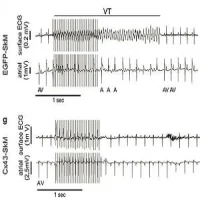A clinical study was recently launched by Finnish researchers to use the latest analytical methods to recognise myocardial infarction patients at high risk of complications. The University of Tampere and TAYS Heart Hospital use artificial intelligence technologies for the home care of heart patients. Their goal is to predict complications as early as possible using AI.
The study which was launched in Tampere used data generated during treatment and monitored how the patient's heart functioned after he or she had been discharged from the hospital. The data was analysed using AI and machine learning methods. Study patients had a small ECG recorder attached to their chest. This recorder was linked to the internet for monitoring purposes.
Kari Antila, Senior Scientist at VTT says that these results can enhance patient safety and can more accurately monitor patients. A thousand patients a year could potentially benefit from the study.
The method can predict complications and at the same time, it can monitor high risk patients. The information derived from the analysis can support decision making which in turn can improve cost-efficiency and enhance patient safety.
"High risk patients are identified during treatment, and monitoring is at first targeted at them. In this way, the sensitivity and specificity of the method can be maximised in those situations where the projected probability is high", emphasizes Niku Oksala, Associate Professor of Surgery and the project leader responsible.
The study was launched at TAYS Heart Hospital in May 2017 and its findings were presented at the International EMBEC 2017 Conference in June.
Source: VTT Technical Research Centre of Finland
Image Credit: Pixabay
Latest Articles
patient safety, myocardial infarction, heart patients, Artificial Intelligence
A clinical study was recently launched by Finnish researchers to use the latest analytical methods to recognise myocardial infarction patients at high risk of complications.










